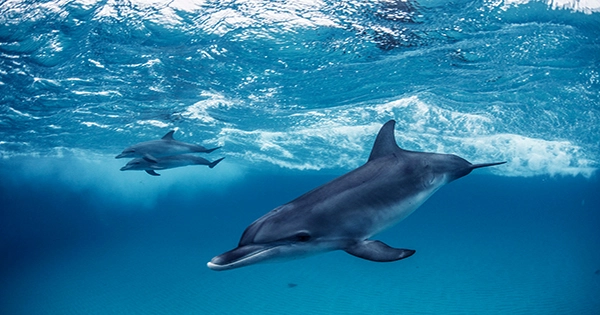Summoning dolphins with a flute may sound like something out of The Legend of Zelda, but scientists in Australia are trying just that to explore if music can be used as a communication tool with cetaceans. In December 2021, researchers from The Australian National University ventured to the water to serenade dolphins in Port Stephens, New South Wales.
The higher register of the flute, piccolo, and recorder players, as well as an opera singer, were a hit with the dolphins, with the higher range of the flute, piccolo, and recorder players, as well as an opera singer, attracting an attentive crowd. The range of instruments was key, according to the researchers, because instruments like the flute can reach frequencies that are closer to dolphin vocalizations than the human voice can.
The concert-led experiment was inspired by cetaceans’ distinctive brain morphologies, particularly the neocortex, which demonstrates “a significant evolutionary shift” compared to their ancestors, according to neurologist and dolphin specialist Dr Olivia De Bergerac to IFLScience.
“The cetacean’s system allows for the quick creation of integrated senses with a depth of knowledge previously inconceivable to humans.” Music is the finest way to communicate in that situation since it is faster than words.” “I’ve found that singing or playing music is the best approach to facilitate interactions with wild dolphins throughout the years.” I observed my Indigenous Australian friend Bill Smith use his didgeridoo to communicate with dolphins twenty years ago, and more recently (three years ago), I saw my famous French singer and friend Camille use her didgeridoo to communicate with dolphins in Australia and France.”
The dolphins responded positively to impromptu concerts by singers and musicians, notably flautist Sally Walker. “The first meeting was lovely,” De Bergerac added, “because one dolphin lingered at the bow of the boat under the flute and Sally.” “They did the same thing with the didgeridoo. The most stunning reaction for me was seeing the dolphins following us outside the harbor and swimming alongside us [while] Sally was still playing music.”
The ability of cetaceans to respond to music has been observed in a variety of species, including a pod of beluga whales which were enticed to follow an icebreaker to safety by classical music. In addition to playing and singing to the dolphins, the researchers used a hydrophone to record the dolphins’ vocalizations so that they could analyze them like a piece of music.
Professor Kim Cunio told IFLScience, “It was when we listened to the hydrophone recordings that I realized how melodious the dolphins actually are.” “They can sweep in wonderful glissandos (across notes) and their language is naturally musical, so that’s it for me; I’ve realized they always generate music, and we can learn from that.”
In their next experiment, the researchers want to transpose their music to play at higher octaves and over underwater speakers to examine how the dolphins react to speeds and frequencies that are more in their register. They also want to transcribe the dolphin noises, which will be reduced by two to three octaves, in order to explore for musical structures, similar to what has already been done with bird song. “I’d love to film a television program about the next voyage that includes Indigenous Australians and their expertise of music and dolphins,” De Bergerac concluded. “I’d love to broadcast Sally Walker’s music underwater so that 100 dolphins may hear it and join us!”
















